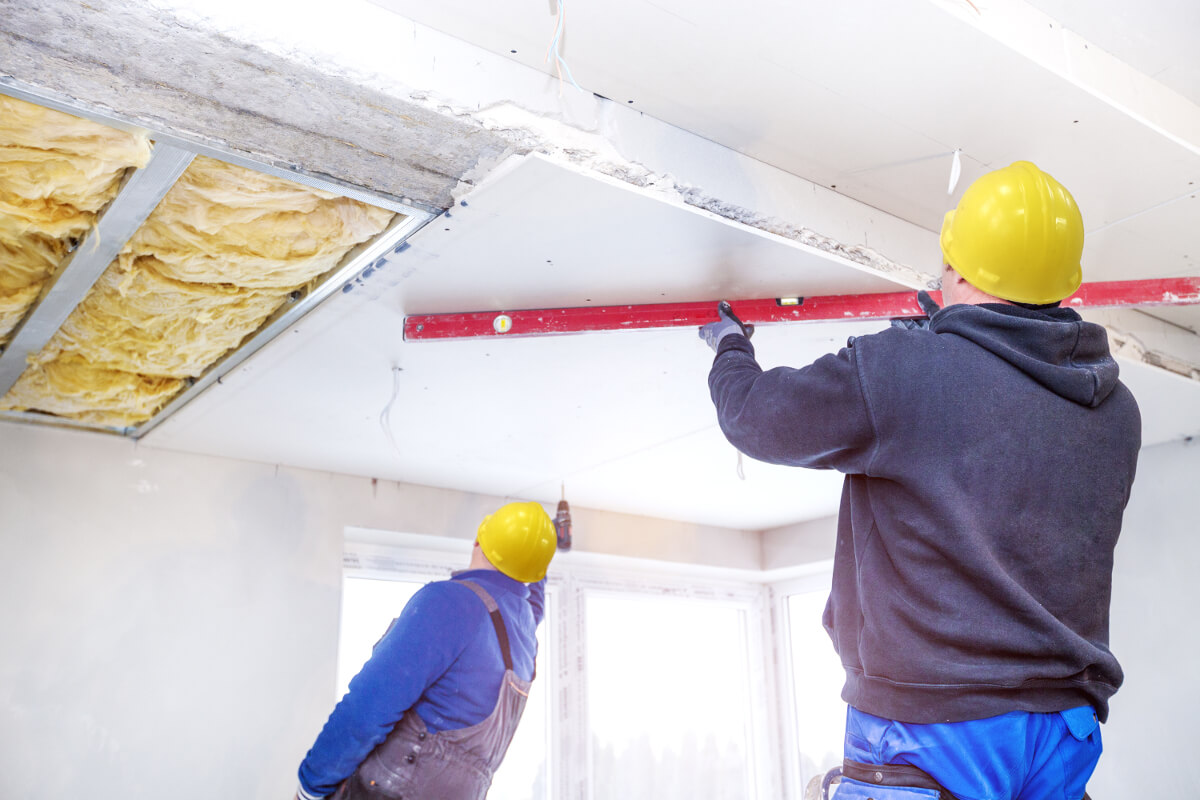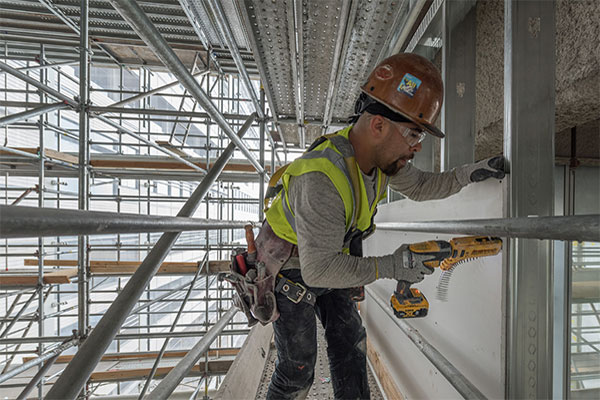Drywall Installation Facilitated: Tips for Perfect Outcomes
Drywall setup is typically perceived as a difficult task, yet with the right strategy and expertise, it can end up being a manageable endeavor. Picking high quality materials and preparing the installment location are essential very first steps that set the foundation for success. In addition, grasping techniques for reducing, hanging, and completing drywall can considerably influence the result. As we check out these important pointers, you may locate that even the tiniest modifications in your approach can cause remarkably enhanced results, leaving you to think about how these methods can transform your next task.
Picking the Right Materials
Choosing the proper products for drywall installation is vital to attaining a resilient and visually pleasing coating. drywall repair. The key component, drywall sheets, usually can be found in numerous thicknesses, with 1/2-inch sheets being basic for indoor wall surfaces. For locations calling for additional moisture resistance, such as cooking areas or washrooms, take into consideration using green board or cement board, which are specially developed to stand up to moisture

In addition, picking the appropriate bolts-- either nails or screws-- is necessary for protecting the drywall to the framing. Drywall screws are typically favored for their holding power and reduced threat of standing out. Take into consideration the finishing touches such as guide and paint, which not only boost the look but also shield the drywall from wetness and wear.
Preparing the Installation Location
Prior to beginning the drywall installment process, it is important to prepare the installation location thoroughly. This prep work includes several essential actions to ensure a smooth and effective project. Initially, clear the area of any kind of furniture, devices, or obstructions that can impede access. A clean work space lessens the risk of damage to existing things and allows for reliable movement throughout installation.
Next, evaluate the wall surfaces and ceiling for any flaws, such as splits, holes, or mold. Address these concerns ahead of time; patch any type of problems and permit sufficient time for repair work to completely dry. Furthermore, guarantee that electric outlets, switches, and plumbing are appropriately placed and accounted for, as this will affect drywall positioning.
Consider the environmental conditions as well. A stable temperature and moisture degree are essential for optimum attachment and efficiency of the drywall products. If needed, utilize a dehumidifier or heating unit to produce suitable conditions.
Cutting and Hanging Drywall
The trick to reliable drywall installment depends on the accurate cutting and hanging of the panels. Begin by gauging the room precisely, considering any blockages such as electric outlets or windows. Use a straight side and an utility knife to rack up the drywall along your dimensions, then break Find Out More it along the racked up line for a clean break. For even more complex cuts, such as around outlets, a drywall saw can be utilized for accuracy.

Constantly work from sites the top down and delegated right, ensuring that you preserve a staggered pattern to boost stability. Correctly hanging the drywall establishes the structure for a smooth finish, eventually bring about exceptional cause your drywall task.
Taping and Mudding Techniques
While appropriate cutting and dangling of drywall establishes the stage, the next vital action involves understanding taping and mudding methods to make certain a seamless finish. Taping is necessary for reinforcing joints and avoiding fractures; it includes installing tape right into the applied joint compound (mud) Start with a high quality fiberglass or paper tape, using the tape over the joint and pushing it right into the damp mud making use of a taping blade, ensuring no air bubbles remain.
Once the tape is in place, apply a thin layer of joint compound over the tape, feathering the edges to create a smooth transition to the drywall surface. Allow this layer to dry completely before sanding it gently to remove imperfections. Repeat this procedure, using added layers of mud as needed-- commonly 2 to 3 layers-- while slowly broadening the application area with each layer to achieve a seamless appearance.
After click here for more the last layer dries out, sand the surface with a fine-grit sandpaper until smooth. drywall repair. Keep in mind to use a mask during fining sand to stay clear of breathing in dust particles. Mastering these taping and mudding strategies is essential for attaining a professional-quality surface in your drywall installation
Finishing Touches for Excellence
Accomplishing a perfect drywall installation goes past mudding and taping; it culminates in the finishing touches that boost the general appearance. These last steps are essential in making sure a professional-grade surface that enhances the appearances of your area.
Begin by sanding the dried out joint compound to create a smooth surface area. Use a fine-grit sandpaper and a fining sand block or pole sander for optimum control. Pay specific attention to edges and edges, as these locations tend to call for more thorough work. After fining sand, wipe down the wall surfaces with a damp towel to remove any kind of dust fragments, guaranteeing a tidy surface for paint.
Following, use a guide specifically created for drywall. This action is vital, as it aids seal the joint compound and supplies a consistent base for the topcoat. When the guide dries out, evaluate for any type of imperfections, and retouch as needed.
Final Thought
In verdict, effective drywall installment pivots on the mindful option of products, detailed prep work of the installment location, and exact implementation of reducing and hanging methods. Mastery of taping and mudding processes is important for accomplishing a smooth finish.
Drywall installation is frequently viewed as a challenging job, yet with the ideal technique and understanding, it can end up being a manageable endeavor.Picking the ideal products for drywall setup is important to accomplishing a durable and aesthetically pleasing coating.Prior to beginning the drywall installment procedure, it is vital to prepare the installation area extensively. Grasping these taping and mudding techniques is critical for attaining a professional-quality surface in your drywall installation.
In verdict, effective drywall installation pivots on the cautious selection of products, extensive preparation of the installment area, and specific execution of cutting and hanging methods.